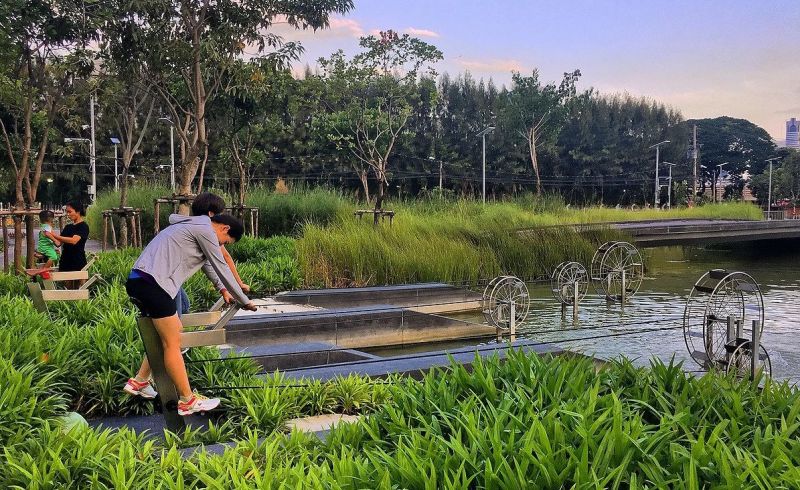This Landscape Architect Transforms Sinking Cites into Landscapes that Fight Floods (Video)
Published on by Water Network Research, Official research team of The Water Network in Social
From London to Tokyo, climate change is causing cities to sink -- and our modern concrete infrastructure is making us even more vulnerable to severe flooding, says landscape architect and TED Fellow Kotchakorn Voraakhom .
But what if we could design cities to help fight floods?
.jpg)
Chulalongkorn Centennial Park, Bangkok, Thailand, designed by LANDPROCESS Landscape Architects (image source: landprocessdesign)
In her inspiring TED Talk, Voraakhom shows how she developed a massive park in Bangkok that can hold a million gallons of rainwater, calling for more climate change solutions that connect cities back to nature.
Her studio LANDPROCESS designs parks to capture stormwater instead of building infrastructure to keep it out, reports Adele Peters for Fast Company offering a solid example:
"Another park that Voraakhom designed, which will open this summer on a university campus on the northern edge of the city, features a massive green roof that will not only grow rice and other food for students, but also (in conjunction with other “rain gardens” on campus) capture more than 2.5 million gallons of water".
Watch the TED Talk on YouTube:
How to transform sinking cities into landscapes that fight floods | Kotchakorn Voraakhom
Attached link
http://www.youtube.com/embed/dQmaMOxwaQIMedia
Taxonomy
- Landscaping
- Irrigated Landscapes
- Flood management
- Flood Risk Management
- Landscape Horticulture
- Landscape Architecture
- Flood
- Landscape Water Conservation
- Landscape Architect
- Landscape & Urban Design
- Sustainable Landscaping
- Flood Modeling
2 Comments
-
Надо пересматривать наше отношение к воде. Природой не предусмотрено использование воды в качестве рабочего тела. Мы создали искусственное испарение, которое по объемам стало превышать органические. Эмиссия углекислого газа в 18000 раз меньше только одних искусственных испарений. Одним из существенных испарителей являются разливы наводнений. А наводнения являются следствием засорения русел рек. Реки надо чистить.
-
Making efficient use of available resources is always a good idea. I fail to see how collecting rain water will affect the solar maximum and minimum natural cycles. The last time I checked there is not one man or the entire population of the earth that could cause the sun to change its spots.